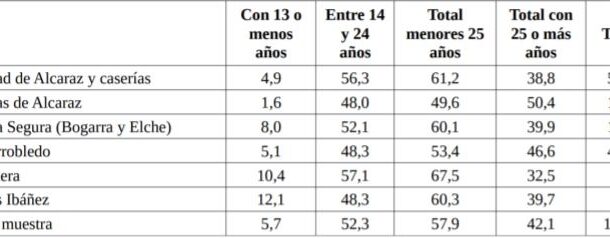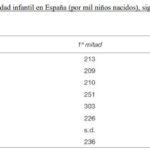
In general terms, infant mortality in Ancien Régime Spain obeyed high-pressure demographic dynamics. However, there was a regional variability that can be traced well into the contemporary period. These trends favoured the Spanish periphery to the detriment of the interior: Catalonia, Valencia, Aragon, Galicia, Cantabria, the Balearic Islands, the Basque Country and Navarre were found to have between 209 and 251 deceased children per 1,000 born in the first half of the 18th century, a range of 42, while by the second half of the century this range had decreased to 17. Inland Spain, on the other hand, infant mortality went from 303 to 320, an increase of 17 between the first and second half of the century. The data on the evolution of the Spanish territories also show a contrast between them; while the average for peripheral Spain is 203, the average for inland Spain is 320. What were the possible causes of regional variability? In addition to family trends and socio-economic structure, there were health (epidemics), climatic (bad harvests) and environmental aspects.
Colección: Estadísticas
Proyecto: 3. Mundo rural y mundo urbano en la formación de la identidad europea., 4. Familia, vida cotidiana y desigualdad social en Europa.
Cronología: XVIII
Ámbito: Educación Secundaria, Bachillerato, Universidad
Enlace: https://www.adeh.org/revista/2014,%202/RDH%20XXXII%20(II)%202014%20F%20Dopico.pdf
Tipo de recurso: Estadística
Formato: Tabla
Fuente: Dopico, F. (2014). “El impacto demográfico de las creencias. Una evaluación desde el siglo XVIII español”, en Revista de Demografía Histórica, XXXII, II, p. 62.
Idioma: Castellano
Fecha: 2014
Propietario: Pablo Ballesta Fernández (Modernalia)
Copyright: ©Revista de Demografía Histórica ©Fausto Dopico
Resumen: Diferencias regionales en la mortalidad infantil española durante el siglo XVIII
Imagen
Etiquetas





